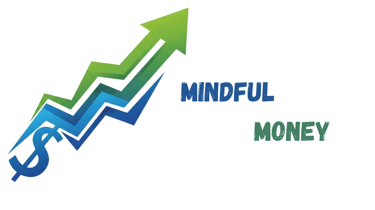The Golden Rule of Investing: How Diversification Protects Your Money
We’ve all seen the headlines. A new cryptocurrency skyrockets 1,000% overnight, or a single stock explodes in value, making early investors a fortune. It's exciting, tempting, and it makes you wonder, "Should I go all-in on the next big thing?"
Cristian Ianowich
7/12/20253 min read


We’ve all seen the headlines. A new cryptocurrency skyrockets 1,000% overnight, or a single stock explodes in value, making early investors a fortune. It's exciting, tempting, and it makes you wonder, "Should I go all-in on the next big thing?"
Hold that thought.
While chasing massive returns is alluring, a successful investment strategy isn't built on lottery tickets. It's built on a time-tested principle your grandparents probably preached: "Don't put all your eggs in one basket."
In the world of finance, that’s called diversification, and it’s the single most important strategy for building long-term wealth and protecting your hard-earned money. Let's break down what it means and how to do it right.
What Does It Really Mean to Diversify?
Think of your investment portfolio like a championship sports team. You wouldn't hire only star strikers, right? You need defenders, midfielders, and a goalie to win consistently. Diversification works the same way; it’s about spreading your money across different types of investments so that a loss in one area doesn't tackle your entire portfolio.
This means going beyond just buying a few different company stocks. True diversification involves a mix of assets.
Key Areas for Your Investment "Team"
To build a resilient portfolio, you should spread your investments across:
Asset Classes: This is the big one. It's a mix of stocks (equities), bonds (fixed income), and alternatives like real estate or commodities.
Industries: Even within stocks, don't just invest in tech. Spread it out across healthcare, consumer goods, energy, and financial sectors. When one industry has a bad year, another might be booming.
Geography: Invest in companies both in the U.S. and in international markets (both developed and emerging). A slowdown in one part of the world can be offset by growth in another.
Company Size: Mix it up with large, stable companies (large-cap) and smaller, high-growth potential companies (small-cap).
Feeling a bit overwhelmed? Don't worry. The goal isn't to buy hundreds of things at once. A great first step is simply understanding where your money is currently concentrated.
The Big Question: What About High-Risk Investments?
Okay, let's talk about the fun stuff—the high-risk, high-reward plays. Is there room for assets like individual cryptocurrencies, meme stocks, or investing in a friend's startup?
Absolutely. But it comes with one non-negotiable rule.
Only invest what you are 100% prepared to lose.
This isn’t just money you think you won’t miss. It's the money that could vanish tomorrow without impacting your financial security, your ability to pay bills, or your long-term goals.
How to Know What You Can "Afford to Lose"
Before you even think about putting money into a high-risk asset, run through this simple checklist. This isn't about being boring; it's about being smart.
Is your emergency fund secure? Do you have 3-6 months of essential living expenses saved in an easily accessible account? If not, this is your top priority.
Are you on track with retirement savings? Are you consistently contributing to long-term accounts like a 401(k) or an IRA? Don't steal from your future self to gamble today.
Is your high-interest debt gone? Paying off a credit card with a 22% interest rate gives you a guaranteed 22% return. No investment can promise that.
If you’ve checked all three boxes, the money left over can be considered for higher-risk plays. Taking a moment to do this personal check-up is one of the most powerful financial moves you can make.
A Simple Strategy to Get Started
So, how does this all fit together? A popular approach is to divide your investment capital.
For example, you could commit 90-95% of your portfolio to a well-diversified foundation built on low-cost index funds or ETFs. This portion is your wealth-building engine. It’s designed for steady, long-term growth.
The remaining 5-10% can be your "play money." This is the cash you can use to explore those higher-risk opportunities. If it pays off, fantastic. If it goes to zero, your financial future is still perfectly on track because your foundation is secure.
Building wealth is a marathon, not a sprint. By creating a smart, diversified base, you give yourself the financial stability and peace of mind to take small, calculated risks without ever putting your future in jeopardy.
